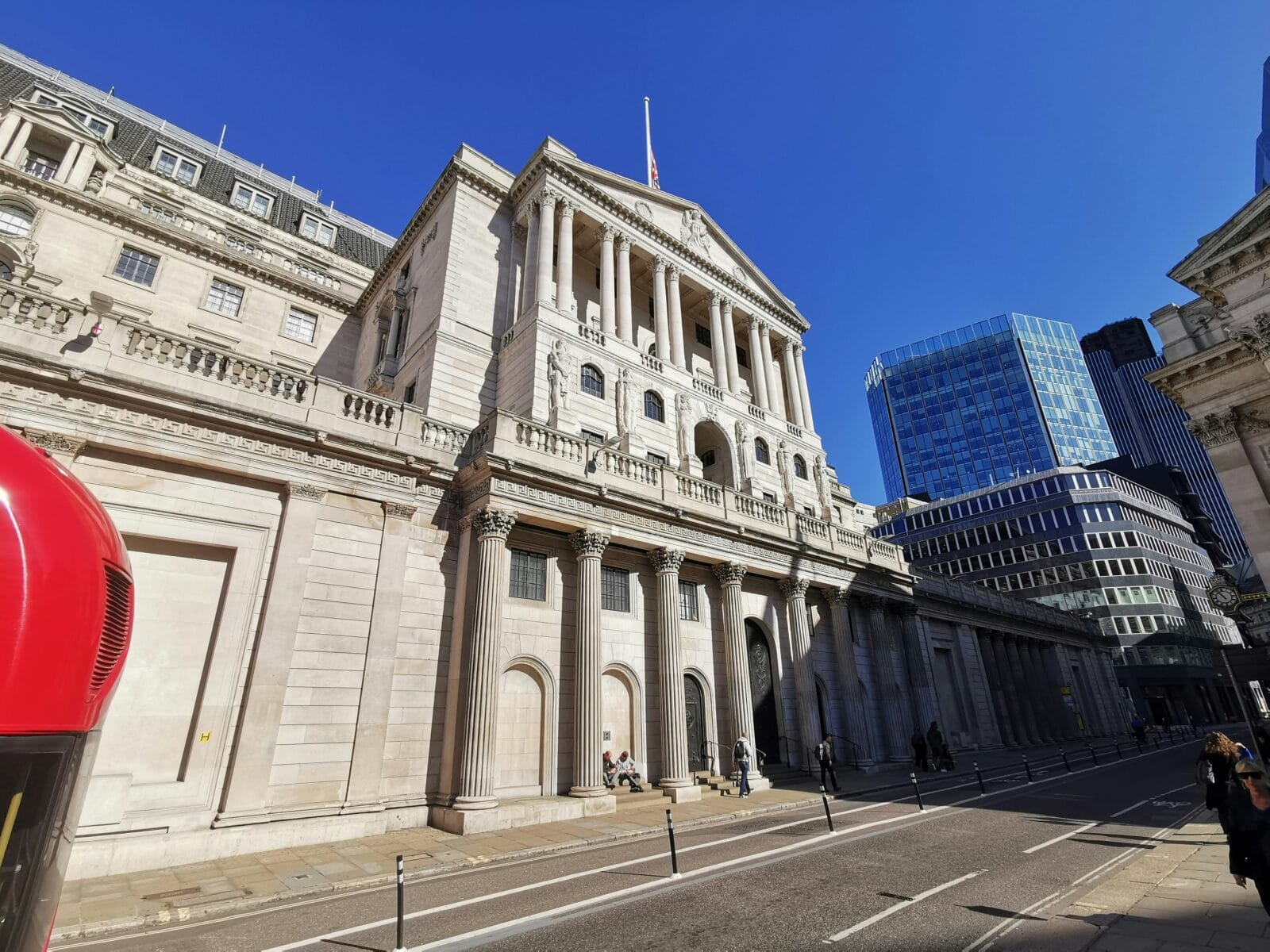As advisers and their teams digest the latest UK inflation data released this morning from the ONS, showing CPI at 2.2% for the year to the end of July, compared to 2% last month, they can reflect on another dampener for the hopes of families and businesses struggling with financial pressures. Today’s hike was mainly driven by energy costs, although the all important rate for services inflation has fallen back to 5.2%. The inflation data clearly have implications for the Bank of England’s MPC too. With their next decision coming up in September, and economists expecting that inflation might remain above 2% target for some months, whether the MPC will make their next move then or wait until November is the subject of debate.
Sharing their reaction to today’s inflation data and their thoughts about what they might mean for the future direction of interest rates, experts from across the financial services industry say:
Nathaniel Casey, Investment Strategist at wealth management firm Evelyn Partners, says: “Despite headline inflation ticking back up above the Bank of England’s 2% target, unfavourable base effects where largely to blame, as a -0.4% monthly print from July 2023 fell out of the annual comparison. Both headline and core inflation undershot expectations in July with both measures coming in 0.1% lower than forecasters had been expecting.
“Within today’s data, the category for Housing and household services, which includes energy, was responsible for nearly all this month’s acceleration in the annual rate. Despite the category remaining in deflationary territory, pricing pleasures are easing at a slower rate than they where a year ago, causing the overall annual rate to accelerate. Restaurants and hotels, which had been one of the hotter segments of the economy started to ease in July with the annual rate decelerating to 4.9% from 6.2% the month prior. This move was responsible for the largest negative contribution to the headline annual rate in July.
“Despite moderating in July, it’s the services segments of the economy that continue to run hot, with annual services inflation coming in at 5.2% compared to -0.6% for goods inflation.
However, the slowing trend in core CPI inflation remains broadly intact. Lead indicators, such as producer price inflation remain supportive. Moreover, cost-push led inflation from wages that feed into the service sector is also moderating. In addition to weakening employment data, annual private sector wage growth slowed to 4.9% in June, down from a peak of 8.2% in June 2023.
“With all four main measures of inflation coming in below expectations today, the inflation picture will remain a source of encouragement to the. Markets are currently still split on whether the BoE will cut rates again at their September meeting or if they will replicate the actions of the European Central Bank and pause after their first cut, but committee members will still have one more month of macro data to inform their decision before then.“
Karen Barrett, CEO and Founder of Unbiased, says that the rise in inflation is disappointing but it shouldn’t be a shock commenting: “Despite this month’s base rate cut to 5%, we can now be almost certain that we won’t see any more for a few months, which means it’s time to be proactive and avoid complacency.
“Fixed-rate mortgage deals have now fallen below 4%, sparked by the recent base rate cut, but a lack of further reductions until November could result in the price war easing.
“So now is the time to think about securing a mortgage deal to protect against any potential hikes if inflation exceeds market expectations in the long term.
“Inflation rising also means savings and annuity rates are likely to stay higher for longer – although following the rate cut, some banks and building societies have already cut savings rates, so it’s important to act quickly. It’s worth considering a fixed-rate account as it’s unlikely the base rate will increase anytime soon. Annuity rates could also stay higher for longer, although there could be reductions this year.”
Rachel Winter, Partner at Killik & Co. said: “Inflation saw a predicted slight uptick in July, due to comparatively higher annual energy bills and buoyant wage growth. Investors and mortgage holders will be hoping this jump in costs is a temporary one and not a signal of a further upward trend that would likely give the central bank pause on further rate cuts. A prolonged period of steady inflation is beneficial to consumers, but also for the business community and markets who require a stable environment in order to effectively plan for investment and expansion.
“But the broader macro environment has been less stable for investors recently, with a perfect storm triggered by a poor jobs report in the US and Japanese rate rise causing a tumultuous week in the markets. This situation, if ever one was needed, is a great reminder for investors to ensure their portfolio is sufficiently diversified across both sectors and asset classes, to safeguard against unexpected market volatility.”
George Lagarias, Chief Economist at Forvis Mazars comments: “Inflation ticking up will probably not discourage the central bank from further rate cuts. Despite the uptick, all key measures, headline, producer prices and services inflation rose less than anticipated by markets.
“The global economy is evidently slowing, which means that price pressures should continue to subside. Having said that, even at a reduced pace, services inflation is still too high for comfort. The billion-Pound question for policymakers is: can China maintain lower export process for goods long enough for Western services inflation to come down closer to its long-term averages?”
Ed Monk, associate director for personal investing at Fidelity International, said: “A rise in the headline rate of inflation today is less important than a slight easing in core inflation – down from 3.5% to 3.3% – which suggests the trajectory for price rises is still downwards. Easing wage rises reported yesterday point to a similar trend and suggest we remain on track for further cuts to interest rates in the months ahead.
“The expected level of interest rates has been falling, with one more cut in 2024 predicted and markets now expecting rates to dip below 4% towards the end of next year. Lower rates have tended to be positive news for stock markets, but investors should always be aware of the wider picture – rates are coming down because there is less momentum in the economy. The Bank of England has begun to ease monetary policy and will be watching growth data closely for signs of a more sudden slowdown that could accelerate the timetable for rate cuts.
“As rates fall cash will become less attractive. Many investors have sought the safety of cash deposits this year as rates have stuck above the rate of inflation, but they may be forced to reassess as interest rates falls. Bonds, which have disappointed for some time, may become more attractive if cuts come through more quickly.”
Peter Stimson, Head of Product at MPowered Mortgages, said:
“With headline inflation back above target, a base rate cut in September is now likely off the cards. However, there’s still the possibility for a cut before the year is out in what remains a highly fluid market.
“Even though inflation has risen, there is unlikely to be an impact on mortgage rates as this has already been priced in. Swaps rates, which lenders use to price fixed rate mortgages, fell quite significantly in the days after this month’s base rate cut and even further following the weak non-farm payrolls data and fears of a US recession.
“However, swaps have risen over the course of the past week and this should mean mortgage prices start to settle around their current level for the time being. Given that headline inflation was slightly lower than expected, there is a possibility that swaps could drop slightly in the next few days.
“From a margin perspective, the current lending environment is nothing short of cut-throat. Competition between lenders is the most intense I have seen in the last 30 years of working in the industry.
“Though a cut in Bank Rate next month now appears less likely, the Monetary Policy Committee monitors a multiplicity of economic variables that could influence its decision-making between now and the September meeting.
“For example, this week alone we have GDP and retail sales data and if either comes in significantly weaker than expected, that could increase the chances of a rate cut in September if the Bank feels the economy may be significantly weakening.
“Additionally, should the US Federal Reserve takes drastic action, that would also influence thinking on Threadneedle Street. There is also another inflation print before the MPC makes its next policy decision, and that will play a role.”
Luke Bartholomew, Deputy Chief Economist at abrdn, said:
“Despite the pick-up in headline inflation, this report represents welcome news for the Bank of England. The move back above the 2% target was always likely given energy base effects, and in fact the rise was slightly smaller than expected. More importantly, measures of underlying inflation pressure look to be softening, with services inflation in particular coming in well below expectations. This should help reassure some policymakers that inflation pressures are proving slightly less persistent than feared. After yesterday’s solid labour market report, the Bank will not be in any hurry to cut rates again immediately, but the ongoing slowing in inflation pressure means there is certainly scope for at least one more rate cut this year.”
Jatin Ondhia, CEO of Shojin, said: “This is a timely reminder, if it were needed, that inflation remains a significant challenge – a challenge to consumers, investors, the Government and the Bank of England.
“The Bank’s interest rates hikes may have steadily brought inflation under control, but there are numerous factors that could drive it back up, and while today’s figure is no reason for panic, it shows how persistent inflationary pressures are likely to be over the coming months. Investors must evaluate accordingly and consider how well-positioned their portfolios are to generate returns in the face of stickier-than-anticipated inflation.
“Diversification and agility will prove key in navigating this testing climate. It should be expected that resilient markets – such as real estate – will continue to attract investor demand, while alternative investments will offer investors the chance to diversify their portfolios if that is indeed their strategy of choice.”
Lily Megson, Policy Director at My Pension Expert, said: “A small uptick in inflation certainly isn’t great news after the long journey back to target levels, but it isn’t devastating either. Critically, it should serve as a reminder that we are not yet out of the woods. Until inflation stabilises, things will be challenging for Britain’s retirees and those planning their retirement – particularly following years of their savings facing a walloping from high inflation.
“So, what needs to be done? Frankly, the onus is on our new government to ensure that savers are given the help and support they need to make well-informed financial decisions, even in times of uncertainty. In practice, that looks like enabling access to financial advice, as well as education and guidance on savings and investments.”
Jonny Black, Chief Commercial & Strategy Officer at abrdn adviser, said: “This ends a brief two-month stint at target, and is a clear sign that savers and investors need to stay on their toes.
“While future inflation trends look positive, there’s always the risk of resurgence – these are still volatile global economic conditions, and factors like sudden supply chain shocks could send prices upwards, faster, once more.
“It remains critical that savers and investors plan for a range of scenarios and consider how they can mitigate inflation’s effects on their strategies. Advisers will have an important role to play here.”
On what the data means for the property market, Nathan Emerson, CEO at Propertymark, comments: “The pathway to a strong and stable economy does come with ups and downs along the way, so today’s fluctuation, while disappointing, is an unfortunate but accepted part of the process. Households remain in a stronger position than only twelve months previous, but there is potential the Bank of England may reflect on today’s figures very carefully when the Monetary Policy Committee next meet to decide on interest rates. While Propertymark is keen to see a further lowering of interest rates, it’s essential to bear in mind this process must be carefully considered to keep the economy firmly on track.”














